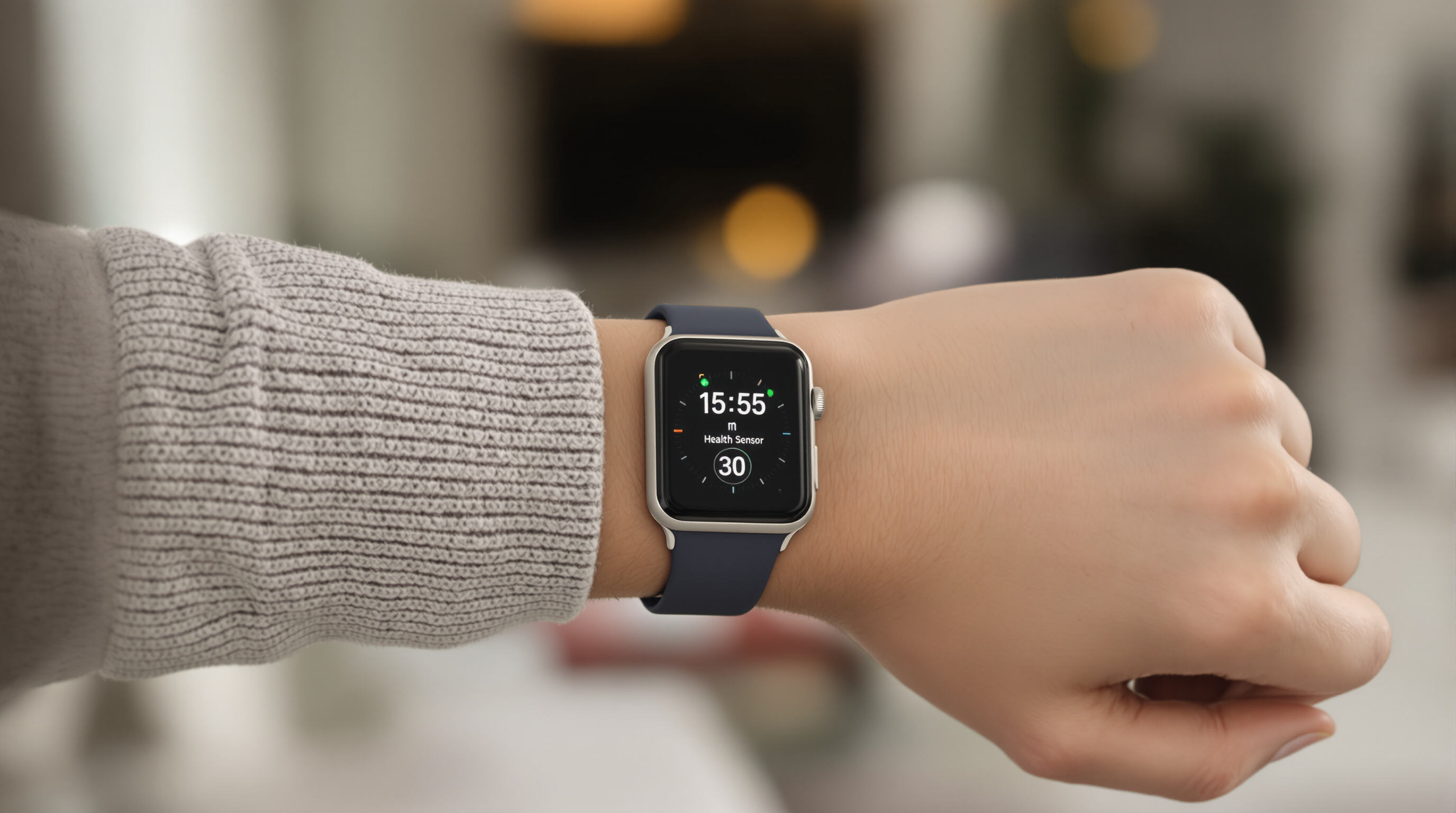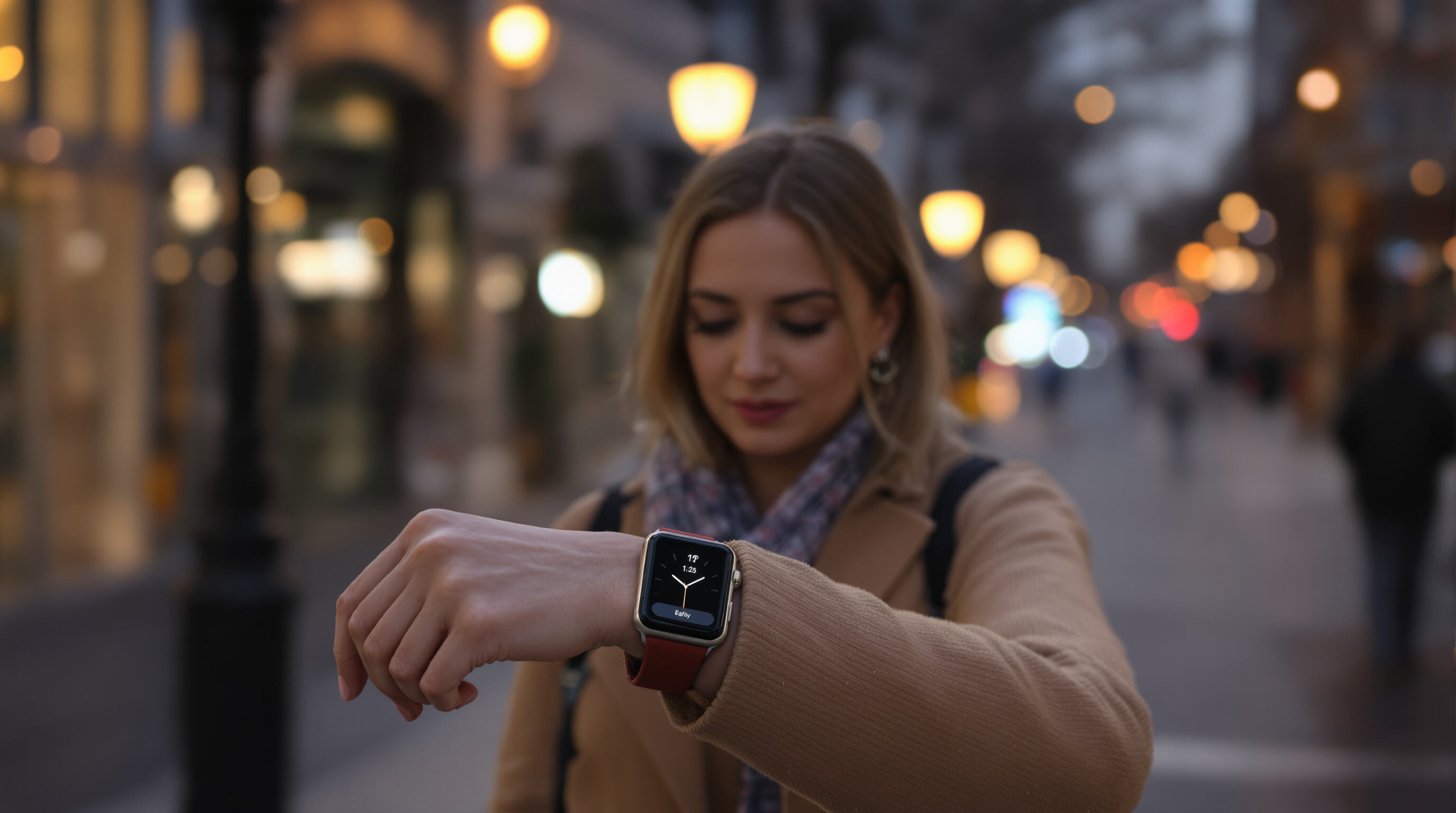Design and Aesthetics: Blending Fashion with Functionality
Slim Profiles, Lightweight Materials, and Stylish Finishes
Smartwatches designed for women today manage to combine both beauty and strength despite being incredibly thin, often measuring less than 11mm thick. Manufacturers are turning to materials like aerospace aluminum and ceramic that don't weigh much but still hold up well over time. The slim design means they sit comfortably on the wrist without causing discomfort during daily activities, making them great companions whether someone is exercising at the gym or attending business meetings. Available finishes range from classic brushed stainless steel to modern matte surfaces, catering to different tastes. According to recent market research published in Wearable Tech Trends 2023, around two thirds of female consumers look for smartwatches that actually go well with their existing jewelry collection rather than clashing with it.
Customizable Bands: Materials, Colors, and Seasonal Trends
The ability to swap out bands makes these devices much more personalized and versatile for different occasions. Silicone options that resist sweat work great during workouts at the gym, whereas high quality leather or woven fabric bands look fantastic when dressing up for meetings or dinners. Many manufacturers have started matching their band colors to what Pantone declares as trendy hues each season, so people can keep looking fashionable throughout the year without buying new watches. According to a recent poll from 2023, around three quarters of female respondents said they really care about being able to customize their bands before making a purchase decision. This clearly shows just how important this feature has become for adapting accessories to fit various aspects of daily life.
Gender-Centric Design Beyond "Shrink It and Pink It"
Brands that want to stay relevant are starting to ditch those old fashioned ideas about men's and women's sizes when it comes to wearables. They're now making products that actually fit smaller wrists better, with curved cases and screens that take up more room without being bulky. Instead of sticking to traditional color schemes, manufacturers have begun offering options like rose gold tones and deep blues that look great on anyone regardless of gender. According to research published in Ergonomics in Tech Journal back in 2022, this kind of thoughtful redesign cuts down on wrist discomfort by around 22% compared to what we used to see in so called "unisex" models. What matters most is that good design doesn't just feel better on the wrist but also looks nicer too.
Health Monitoring Tailored to Women’s Physiology

Menstrual Cycle, Fertility, and Ovulation Tracking Accuracy
Today’s smartwatches predict menstrual cycles with ±1.2 days accuracy by combining basal body temperature and cervical fluid pattern data through multi-sensor validation. Research from UW Medicine (2025) shows 83% of users benefit from improved conception planning when fertility metrics sync with period-tracking apps.
Pregnancy and Postpartum Health Support Features
Advanced models monitor uterine activity in the third trimester using PPG sensors to detect irregular contraction patterns. Postpartum tracking includes recovery indicators such as pelvic floor muscle engagement and lochia flow consistency, supported by dehydration alerts based on sweat electrolyte analysis.
Hormonal Health, Sleep, and Stress Insights
Optical sensors now estimate cortisol levels, identifying stress spikes linked to energy dips during the follicular phase. Sleep staging algorithms account for progesterone-related 0.5°C temperature increases in the luteal phase, improving insomnia detection by 29% over generic models.
Addressing Bias in Biometric Algorithms
Female-specific photoplethysmography algorithms reduce heart rate inaccuracies during high-intensity ovulation days by 34%, as validated in the 2023 Female Health Project. Encrypted raw data handling also ensures perimenopausal users are better represented in AI training datasets, addressing historical gaps in biometric research.
Fitness Tracking for Women’s Preferred Activities
Smartwatches designed for women deliver accurate performance insights across activities commonly favored by female users—yoga, Pilates, and swimming—by combining advanced motion sensors with gender-informed algorithm adjustments.
Optimized Recognition for Yoga, Pilates, and Low-Impact Workouts
Motion sensors detect subtle postural shifts and balance changes, offering real-time feedback on form and calorie burn. With 68% of wearable users valuing precise yoga tracking (Journal of Sports Science, 2023), manufacturers have refined pose-recognition technology to meet this demand.
Heart Rate and VO2 Max Adjustments Across Menstrual Phases
Top-tier devices dynamically adjust heart rate zones and VO2 max estimates based on menstrual cycle phases, accounting for hormonal fluctuations that can affect cardiovascular performance by up to 12% (Physiological Reports, 2023). This ensures workout recommendations remain physiologically relevant throughout the month.
Water Resistance and Swim Tracking for Active Lifestyles
Watches rated at 5ATM or higher accurately track lap counts, stroke efficiency, and underwater heart rate. Given that 41% of female swimmers use wearables to monitor performance (2023 survey), aquatic compatibility has become a standard expectation in premium models.
Integration with Female-Focused Fitness and Wellness Apps
Seamless integration with specialized apps—covering menstrual health, pregnancy nutrition, and hormonal balance—enables centralized wellness management. Over 55% of women prefer ecosystems that unify multiple health data streams (Women’s Health Tech Review, 2023), driving deeper platform interoperability.
Safety, Privacy, and Everyday Practicality

Emergency SOS, Fall Detection, and Location Sharing
Personal safety features like emergency SOS buttons and automatic fall detection are essential, especially during outdoor runs, late commutes, or high-risk conditions such as pregnancy complications. When triggered, these tools share GPS coordinates with emergency contacts or services, reducing response times by 40% in urban areas (Ponemon Institute 2023).
Silent Alarms and Personal Safety Alerts for Urban Use
Discreet haptic alerts allow users to silently notify trusted contacts in potentially dangerous situations. Geofencing triggers warnings when entering high-crime areas, leveraging machine learning for proactive threat detection. With 68% of women reporting they avoid walking alone at night (2023 safety survey), these features address real-world security concerns.
Data Security in Sensitive Women’s Health Tracking
Given the sensitivity of menstrual, fertility, and pregnancy data, top-tier encryption and compliance with GDPR and HIPAA are non-negotiable. The rise in healthcare data breaches—up 320% since 2020—makes end-to-end encryption critical. Industry standards now require zero-trust architecture for biometric storage, ensuring unauthorized access is prevented even in cloud-based systems.
Battery Life, Connectivity, and User Experience
All-Day Battery for Demanding Schedules
A reliable smartwatch must sustain 16+ hours of continuous use, including GPS, calls, and activity tracking. Modern power management systems optimize circuit efficiency, enabling slimmer builds without compromising battery life. Innovations in PCB design extend runtime by 22% compared to earlier generations (LinkedIn 2023), supporting busy professionals balancing work, fitness, and family.
Cross-Platform Compatibility with iOS and Android
Bluetooth 5.3 with dual-device pairing ensures seamless connectivity across iPhone and Android platforms, keeping notifications, health data, and updates synchronized. This feature ranks as a priority for 78% of women (TechRadar 2024), eliminating data loss when switching phones.
Smart Notifications: Calls, Messages, and Calendar Sync
Customizable alert settings filter distractions while highlighting critical information: calendar reminders for meetings or school pickups, VIP call alerts during evening commutes, and silent vibrations for quiet environments. Integrated power-management chips reduce notification processing drain by 19% (Batteries News 2025), preserving battery for essential functions.
Frequently Asked Questions (FAQ)
What materials are used for women's smartwatches?
Women's smartwatches often use lightweight materials like aerospace aluminum and ceramic, allowing for durable yet comfortable wear.
How do smartwatches help in health monitoring?
Smartwatches provide health monitoring tailored to women's needs, including menstrual cycle tracking, pregnancy health support, and stress management through hormonal insights.
Can I customize the bands of my smartwatch?
Yes, many women’s smartwatches allow for customizable bands with various materials and colors, letting users match their personal style or the current fashion trends.
Are smartwatches compatible with different smartphone platforms?
Most smartwatches offer cross-platform compatibility with iOS and Android, ensuring notifications and data are synchronized regardless of the phone type.
How do smartwatches enhance user safety?
Smartwatches come with features like emergency SOS, fall detection, and geofencing alerts to enhance personal safety, especially in urban environments.




